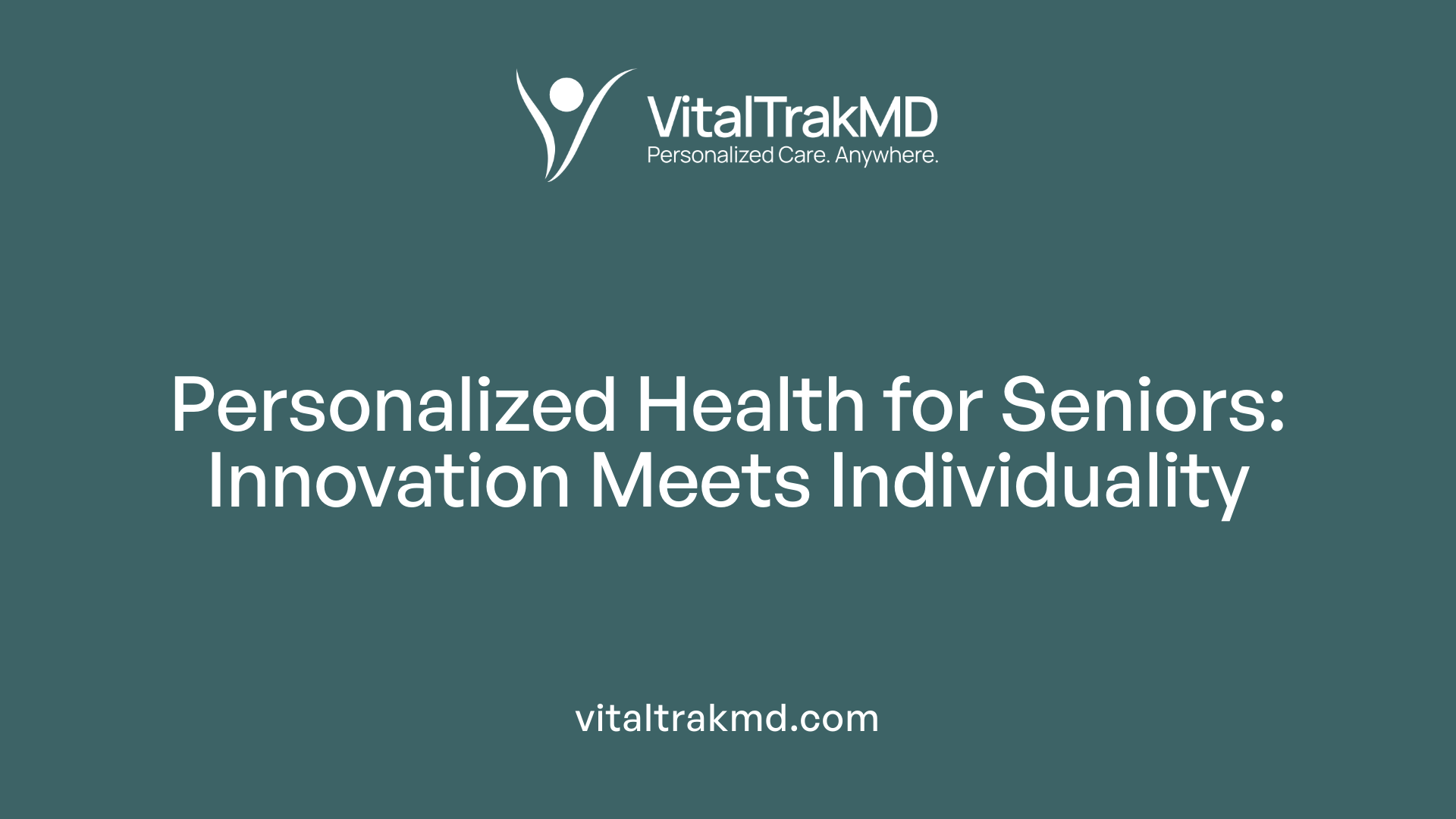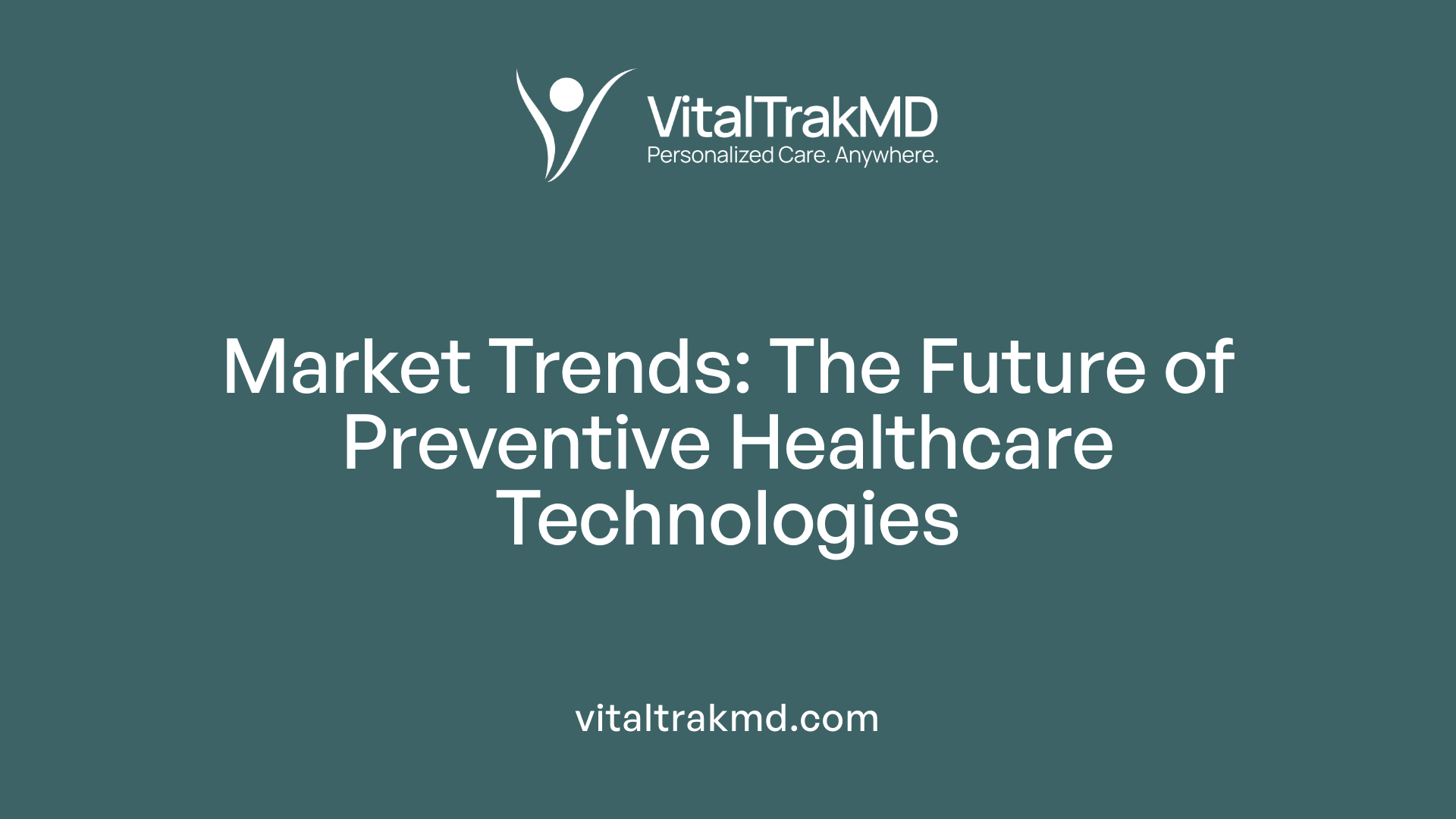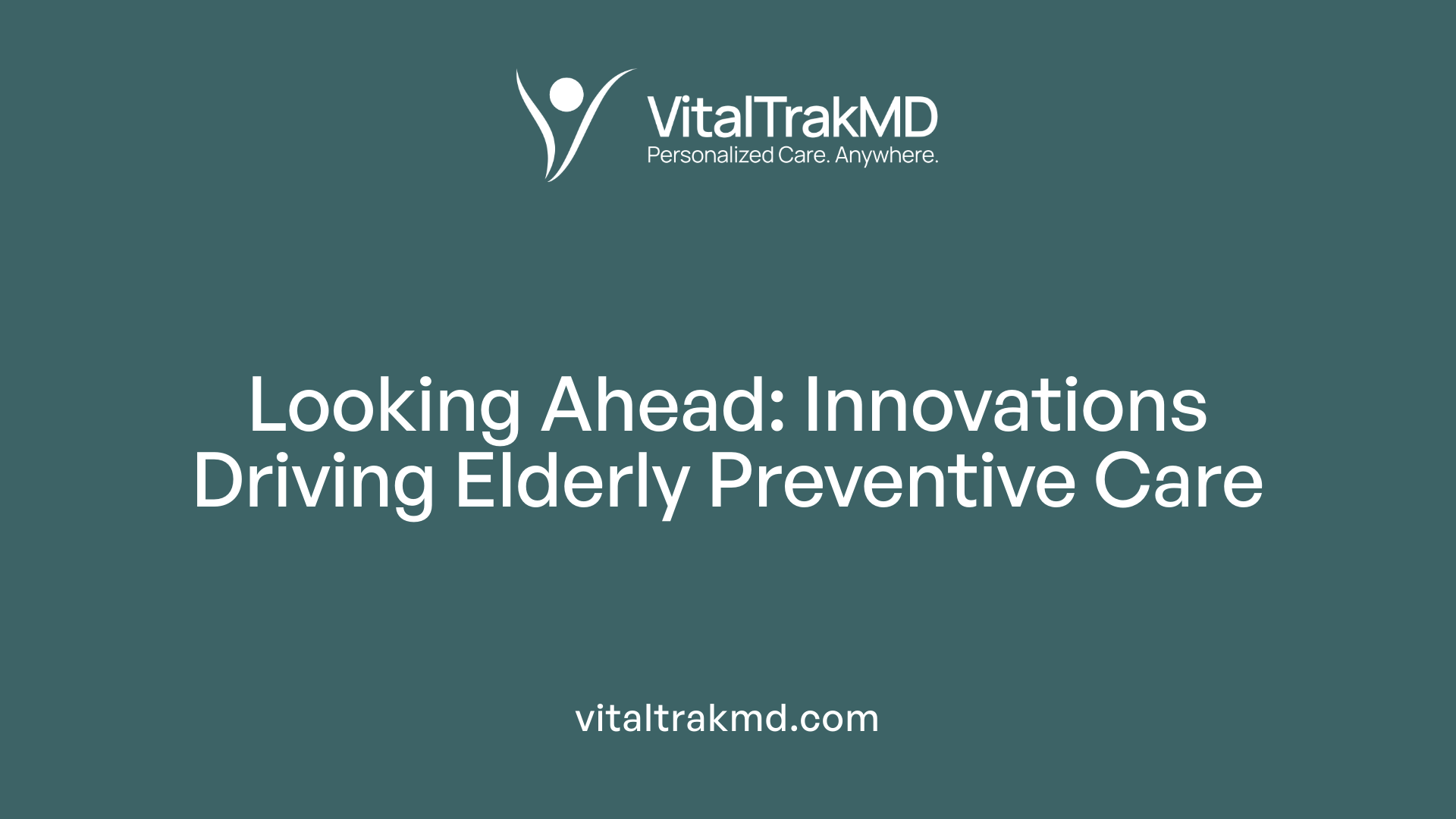Growth Trends in Personalized Preventive Health Services for Seniors

Understanding the Evolving Landscape of Elderly Preventive Services
The landscape of senior healthcare is undergoing a transformative shift driven by technological innovations, demographic changes, and policy reforms. Focused on proactive, personalized interventions, this evolution aims to improve health outcomes, enhance quality of life, and foster independence among older adults. This article explores growth trends, technological impacts, and strategic models redefining elderly preventive health, offering a comprehensive overview of this dynamic sector.
Personalized Medicine: Tailoring Care to Individual Genomics and Lifestyle

What are the benefits of personalized preventive health services for seniors?
Personalized preventive health services provide notable advantages for older adults by customizing care based on their unique health profiles. Programs like MDVIP emphasize comprehensive, individualized approaches such as extended wellness visits, targeted screenings, and tailored lifestyle coaching. These strategies foster stronger relationships between physicians and seniors, which, in turn, improve communication and trust.
Early detection of potential health issues is a major benefit, helping to prevent disease progression and reduce emergency hospital visits. Additionally, personalized services encourage healthier behaviors, lower healthcare costs over time, and address specific risk factors for chronic diseases like diabetes, heart disease, and osteoporosis.
Community-based models and multidisciplinary teams further facilitate better preventive care uptake, managing complex health needs effectively. Ultimately, personalized health empowers seniors to stay active, independent, and engaged in their healthcare, promoting overall well-being and age-friendly living.
How do technological advancements like AI and telehealth transform senior preventive care?
Technologies such as AI and telehealth are revolutionizing how care is delivered to seniors by enabling timely, precise interventions. AI algorithms analyze vast amounts of health data, aiding in disease prediction, diagnosis, and customized treatment planning.
Telehealth extends healthcare access beyond traditional settings, allowing seniors in remote or underserved areas to consult with healthcare providers via virtual platforms. This capability facilitates regular check-ups, follow-up appointments, and remote monitoring, reducing the need for travel.
Wearable health devices integrated with AI monitor vital signs continuously, alerting both patients and providers to early signs of health deterioration. These innovations promote proactive, personalized care that can prevent complications and improve health outcomes.
In what ways do personalized care plans and assessments influence elderly health outcomes?
Personalized care plans are central to improving health and safety among seniors. They are tailored to individual medical histories, lifestyle preferences, and social circumstances, which enhances treatment adherence and satisfaction.
Assessments that incorporate physical, mental, and social factors help identify risks and needs early on. This proactive approach enables timely interventions, such as medication adjustments, home safety modifications, and personalized exercise or nutrition plans.
Moreover, involving family members and utilizing technology—like remote monitoring and health apps—fosters better communication and enables continuous evaluation. These strategies collectively lead to better management of chronic conditions, reduced hospitalizations, and a higher quality of life.
What are the current trends and future outlook in personalized elder care?
Current trends focus on integrating advanced digital tools such as wearable devices, AI analytics, and smart home systems to support aging in place. There is a growing emphasis on holistic care models that address physical, mental, and social health needs.
Future developments are likely to include more predictive analytics, enabling healthcare providers to anticipate health issues before symptoms emerge. The use of precision medicine, especially genomics, will enable highly individualized interventions.
Innovations like virtual reality for memory care, culturally tailored programs, and AI-powered caregiver support are expanding access and improving elder well-being. Policy support and technological advancements will foster more seamless, proactive, and person-centered care experiences.
What challenges and benefits are associated with personalized senior healthcare?
Personalized healthcare offers benefits such as improved health outcomes, increased independence, and enhanced emotional well-being. Tailored treatment plans and home modifications reduce hospitalizations while maintaining safety and promoting dignity.
It also helps strengthen relationships between seniors and care providers, promoting participation and satisfaction.
However, challenges include concerns about data privacy, cybersecurity, and ethical issues related to data ownership. Technological disparities can hinder access, especially for socioeconomically disadvantaged groups.
High initial costs and the need for specialized training pose additional barriers.
Despite these issues, adopting personalized mobile health and integrated care strategies holds great promise for creating more effective, equitable eldercare.
How do integrated healthcare models enhance preventive care for aging populations?
Integrated care models promote coordinated, multidisciplinary approaches that streamline services around the patient’s needs. They facilitate early detection of chronic conditions through comprehensive assessments and regular monitoring.
By fostering collaboration across healthcare providers, social services, and caregivers, these models ensure holistic interventions that address medical, emotional, and social factors.
They also involve seniors and their families in care planning, which improves adherence and empowerment.
Community and home-based interventions further support aging in place by maintaining mobility and mental health. Overall, integrated care improves health outcomes, optimizes resource use, and enhances quality of life for older adults.
Additional Information
| Aspect | Innovation/Trend | Impact/Details |
|---|---|---|
| Advanced Genomics | Pharmacogenomics | Guides medication choices, reduces side effects |
| Digital Monitoring | Wearables and remote sensors | Enable continuous health tracking and early intervention |
| AI in Diagnostics | Machine learning algorithms | Improve accuracy and personalization of diagnosis |
| Telehealth Expansion | Virtual visits and remote consultations | Eliminate barriers caused by mobility or location |
| Memory and Cognitive Care | VR and digital apps | Support cognitive engagement and mental health |
| Ethical and Privacy concerns | Data privacy policies and security measures | Protect patient data while enabling innovation |
This evolving landscape reflects a shift towards smarter, more individualized care, leveraging technology to improve elder health outcomes while navigating ethical considerations.
Market Dynamics and Industry Forecasts

What are the growth trends and market size for preventive healthcare technologies?
The market size for preventive healthcare technologies and services was estimated at USD 70.68 billion in 2023, reflecting growing global interest and investment in health and wellness. This sector is poised for substantial expansion, with projections indicating it will reach approximately USD 150 billion by 2035. Such growth corresponds to a compound annual growth rate (CAGR) of around 6.47% from 2025 to 2035. This upward trajectory is driven by increasing consumer awareness, continuous technological innovation, and the rising demand for personalized, proactive health solutions. Advances in wearable devices, telehealth services, health analytics, genomics, and molecular diagnostics are vital contributors, empowering individuals to monitor and manage their health more effectively.
The expansion of preventive health care aligns with the broader shift towards proactive medicine, emphasizing early detection, lifestyle modification, and early treatment to prevent costly health conditions.
How does the demographic shift influence market demand for senior-focused preventive services?
The demographic transition toward an aging global population significantly influences the demand for senior-specific preventive services. By 2050, the number of individuals aged 60 or older is expected to double to 2.1 billion worldwide, with those over 80 tripling to approximately 426 million.
This rapid demographic change results in heightened demand for healthcare solutions tailored to older adults, focusing on managing chronic diseases and age-related conditions such as neurological disorders, cardiovascular diseases, cancer, arthritis, and osteoporosis.
The COVID-19 pandemic has further underscored the importance of remote and home-based care, accelerating adoption of telehealth and digital monitoring tools among seniors. Regions like North America lead the market with extensive infrastructure, long-term care centers, and supportive policies. Meanwhile, Asia Pacific is the fastest-growing region, driven by expanding healthcare investments and demographic trends.
The increasing prevalence of multi-morbidity among seniors accentuates the need for personalized and preventive strategies, shaping a market receptive to innovation and targeted interventions.
What technological innovations are fueling the sector’s growth?
Technological progress is central to the rapid growth of preventive healthcare for seniors. Wearable health devices, such as smartwatches and remote monitoring tools, allow continual health status tracking, facilitating early detection of potential issues.
Telehealth platforms have become mainstream, especially for seniors with mobility or transportation challenges, providing easy access to healthcare providers from home.
Artificial Intelligence (AI) enhances diagnostic accuracy, personalizes treatment plans, and supports predictive analytics—key for early intervention.
Genomics and molecular diagnostics provide insights into genetic predispositions, enabling customized preventive strategies and therapies tailored to individual risks.
Digital health platforms and mobile apps support health management, medication adherence, mental health practices, and social engagement. For example, apps like Calm and Headspace promote mental well-being, while specialized platforms like Mobithera assist with remote physiotherapy.
Innovations in bioinformatics and the development of personalized devices, including AI-powered exercise regimes like XrCycling and ExerNeck, exemplify ongoing efforts to improve preventive care at home.
Who are the key players shaping the future of senior preventive health?
Major organizations and innovative startups are leading the charge in advancing senior preventive health solutions. Established giants such as UnitedHealth Group, Cigna, Epic Systems Corporation, and Johnson & Johnson are investing heavily in R&D, integrating digital health solutions, and expanding telehealth services.
Emerging firms focus on developing tailored applications and devices—Mobithera offers remote physiotherapy, while platforms like ExerNeck and XrCycling deliver personalized exercises utilizing AI and virtual reality.
These companies are committed to enhancing healthcare delivery, patient engagement, and outcomes through technological innovation. Collaborations across industry, academia, and health systems foster a fertile environment for developing comprehensive, accessible, and effective preventive care tailored for seniors.
The push towards digital integration and personalized modality is expected to guide industry evolution, with these key players at the forefront of shaping a healthier aging population.
Impact of Public Policy and Economic Factors

What is the significance of demographic factors and policy reforms in shaping senior preventive health services?
Demographic parameters such as age, income level, educational background, and social connections play a crucial role in determining health outcomes and the likelihood of engaging in preventive health behaviors among older adults. For instance, seniors with lower incomes tend to face higher risks of disabilities and deteriorating health earlier in life, underscoring the necessity for accessible, affordable healthcare services and targeted intervention programs.
Moreover, social isolation and loneliness have been linked to increased risks of cognitive decline, dementia, and physical health issues. These social determinants highlight the importance of fostering strong social networks and community engagement activities for seniors.
Policy reforms, including the implementation of state-level Master Plans for Aging, are vital in addressing these disparities. Such policies promote a comprehensive approach that spans housing, transportation, healthcare, and economic security, ensuring a supportive environment for aging populations.
By incorporating demographic insights into policy planning, governments can develop sustainable and effective preventive health services tailored to diverse senior populations. These efforts contribute to a more equitable healthcare landscape and improve overall health outcomes for older adults.
What are the key economic considerations in preventive healthcare for the elderly?
Economic analysis of preventive healthcare for seniors reveals that initial investments in prevention can be substantial. However, these upfront costs are often offset by long-term savings through reduced hospitalizations, emergency care, and management of advanced diseases.
Public policies like Medicare coverage can influence preventive service utilization, although increased coverage alone does not necessarily lead to higher engagement unless peaking adverse health events prompt action. Tailored preventive programs, such as MDVIP, demonstrate the potential for cost savings by encouraging lifestyle modifications and early intervention, reducing dependence on costly emergency treatments over time.
Cost-benefit assessments consistently show that focusing on prevention results in enhanced health outcomes and financial savings for healthcare systems. Managing chronic conditions through proactive measures not only improves quality of life but also diminishes the economic strain on healthcare resources.
Additional economic factors impacting senior preventive care include system capacity and overall economic prosperity, which influence the availability, accessibility, and affordability of services. As chronic disease prevalence remains high among seniors—most of whom have multiple comorbidities—preventive strategies become even more economically advantageous.
Ultimately, investing in preventive healthcare aligns with broader goals of economic efficiency and sustainable healthcare delivery, especially given the rapidly aging population, which will escalate demand for cost-effective, high-quality services.
| Aspect | Details | Economic Impact |
|---|---|---|
| Demographics | Age, income, education, social connection | Influences risk levels and engagement |
| Policy Reforms | Master Plans for Aging, healthcare access | Can reduce disparities and improve outcomes |
| Initial Costs | Investment in prevention programs | Long-term savings through reduced hospitalizations |
| Healthcare Utilization | Medicare and insurance coverage | Policies can incentivize preventive care |
| Program Examples | MDVIP, community health initiatives | Cost savings via lifestyle and early interventions |
| Overall Impact | Chronic disease management | Decreases economic burden, improves quality of life |
Adaptation of policies and economic strategies to support preventive healthcare for seniors remains vital. Such efforts promote not only healthier aging but also ensure more sustainable and equitable healthcare systems in the face of demographic shifts and rising healthcare costs.
Future Directions in Elderly Preventive Healthcare

What are the upcoming trends and future directions in personalized preventive health for the elderly?
The landscape of elderly preventive healthcare is rapidly evolving, driven by advances in technology, genomics, and a deeper understanding of holistic health. Future trends emphasize creating predictive and proactive care models that utilize personalized data for early detection and intervention. Precision medicine, which tailors treatments based on individual genetic, environmental, and lifestyle factors, will become more prominent, helping to address chronic conditions more effectively.
Innovations in memory care will focus on integrating digital tools like virtual reality, memory apps, and cognitive training programs that not only support cognitive health but also involve caregivers through digital training modules. Culturally competent services are expanding to ensure that diverse populations receive accessible, respectful, and personalized care. This involves training healthcare providers in cultural sensitivity and developing services that respect different health beliefs and practices.
Holistic wellness approaches will prioritize mental, emotional, and social well-being, integrating services such as mindfulness, social engagement platforms, and wellness coaching. Policy frameworks and senior living communities are transforming into integrated hubs that combine high-tech solutions with compassionate, person-centered care. These communities will offer customized health plans, remote monitoring, and therapeutic interventions tailored to individual aspirations, lifestyle, and cultural backgrounds.
Overall, the future of preventive healthcare for seniors is geared towards high-quality, dignified aging experiences that promote independence, improve health outcomes, and foster a sense of community and purpose.
What are the benefits, challenges, and future outlook of preventive health care?
Preventive health care delivers numerous benefits for the aging population. It enhances overall population health by catching diseases early and implementing timely interventions. This approach reduces the need for costly treatments by addressing health issues before they become severe. Advances in technology—such as AI-driven diagnostics, wearable health devices, telemedicine, and genetic testing—are revolutionizing early risk detection and personalized health assessments.
These innovations enable more tailored prevention strategies that are responsive to an individual's unique health profile. For instance, continuous glucose monitors for diabetes management, genetic testing for cardiovascular risks, and AI-enabled screening for cancers exemplify how technology personalizes prevention.
However, several challenges remain. Equitable access to preventive care can be hindered by socioeconomic disparities, digital literacy gaps, and healthcare infrastructure limitations. Data privacy concerns about sensitive genetic and health information pose barriers to broader adoption. Moreover, integrating these advanced tools into existing healthcare systems requires substantial investment, training, and policy adjustments.
Looking ahead, the future of preventive care is increasingly driven by digital health tools and genomics. AI and machine learning will further enhance predictive accuracy, enabling clinicians to customize prevention plans even more precisely. Policies promoting digital literacy, privacy protections, and equitable resource distribution will be essential.
Overall, the shift toward proactive, technology-enabled preventive healthcare signifies potential for improved health outcomes, reduced long-term costs, and enhanced quality of life for seniors. It emphasizes early action, personal empowerment, and integrating physical, mental, and social health strategies to facilitate healthy aging.
How are innovations such as digital health tools, genomics, and AI transforming senior care?
Innovative digital health tools, including mobile health apps, wearable tracking devices, and telehealth platforms, have revolutionized care delivery by providing continuous, real-time health monitoring. Seniors can now participate actively in their health management through easy-to-use interfaces that track vital signs, medication adherence, and activity levels. This immediacy allows for timely interventions and reduces emergency hospitalizations.
Genomics plays a crucial role in understanding individual health risks and guiding personalized treatments. Pharmacogenomics, for example, helps predict drug responses, minimizing adverse effects and optimizing therapeutic efficacy. Genetic testing for conditions like Alzheimer’s disease and osteoporosis supports early detection and preventive strategies.
AI-enabled diagnostics and data analytics can process vast amounts of health data, identifying patterns that are often imperceptible to humans. This capability enhances disease prediction, supports tailored treatment plans, and streamlines clinical workflows. Virtual health assistants powered by AI help seniors with medication reminders, appointment scheduling, and providing companionship, thus encouraging adherence and reducing loneliness.
Emerging technologies like remote surgeries, 3D printing of medical devices, and robotic assistance are on the horizon, promising even more advanced care options. These innovations foster a healthcare environment that prioritizes personalization, efficiency, and accessibility, ultimately improving health outcomes and quality of life for older adults.
What technological advances are shaping the future of elderly healthcare?
The future of elderly healthcare is being shaped by a spectrum of technological advances that aim to improve accessibility, personalization, and efficiency. Key developments include:
| Technology | Description | Impact on Elderly Care |
|---|---|---|
| Wearable Devices | Track vital signs, activity, sleep, and more | Enable continuous monitoring and early alerts |
| Telemedicine Platforms | Allow virtual consultations | Improve access for mobility-limited seniors |
| Genetic and Genomic Testing | Identify disease risks, guide treatment | Facilitate personalized medicine approaches |
| AI and Machine Learning | Analyze complex data for insights | Support early diagnosis and tailored interventions |
| Virtual Assistants and Chatbots | Assist with medication, health info | Reduce loneliness and support daily routines |
| Remote Monitoring & Sensors | Detect falls, monitor environment | Enhance safety and independence |
| 3D Printing & Robotics | Custom medical devices, assistance robots | Personalize devices and provide companionship |
| Mobile Health Apps | Manage health data, education | Promote engagement and health literacy |
These technologies are converging to create an interconnected ecosystem of care that adapts to individual needs. They support aging in place, improve health outcomes, and help manage chronic diseases efficiently.
How will future healthcare models support aging populations?
Future healthcare models are shifting towards integrated, person-centered systems that leverage technology to enhance aging experiences. These models emphasize wellness, prevention, and independence.
In community-based care, smart homes equipped with sensors and automation support seniors’ daily routines while alerting caregivers or emergency services if needed. High-tech senior living communities will combine medical services, social activities, and personalized health plans within a safe, engaging environment.
Telehealth will become standard, allowing seamless access to healthcare providers regardless of geographic barriers. Remote patient monitoring ensures continuous oversight of chronic conditions, reducing hospital admissions.
Healthcare policies will prioritize value-based care, focusing on outcomes and patient satisfaction. Data sharing and interoperability between systems will enable coordinated, holistic care plans.
Educational programs and caregiver support networks will further empower families and professionals, ensuring comprehensive, empathetic, and culturally sensitive care.
Overall, these future models aim to provide an aging population with a dignified, autonomous, and active life, minimizing the need for institutional care and promoting high-quality aging in place.
Charting a Path Forward in Elder-Centric Preventive Healthcare
The convergence of technological innovation, demographic shifts, and strategic policy reforms signals a promising future for personalized preventive health services for seniors. As advancements continue to improve early detection, tailored interventions, and holistic care approaches, the goal of aging gracefully with independence and optimal health becomes increasingly attainable. Emphasizing proactive, integrated, and equitable healthcare models will be essential to meet the growing demands of aging populations worldwide, ultimately fostering healthier, more engaged, and better-supported seniors in the years to come.
References
- 2025 Trends for Seniors: Health, Technology, and Wellness
- The Future of Personalized Healthcare Technology
- Trends and Innovations in Senior Care | Amada Blog
- Proactive Health: The Shift Towards Preventative Healthcare
- Geriatric Care Services Market Size And Share Report, 2030
- 2023 Trends In Healthcare: Personalized Healthcare - Sentact
- How Personalized Medicine Shapes Elder Care - New LifeStyles
- Next in health services 2025: Secure your future with resilience and ...
- The Application of Preventive Medicine in the Future Digital Health Era
Recent articles
Want to Feel Better and Live Healthier?
Join hundreds of patients taking control of their health with personalized care that fits their life – not the other way around.
Rated 4.8/5 by 32+ customers







